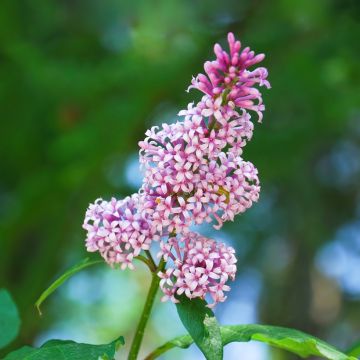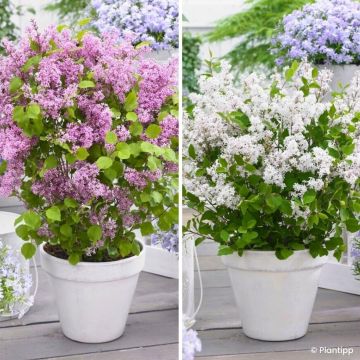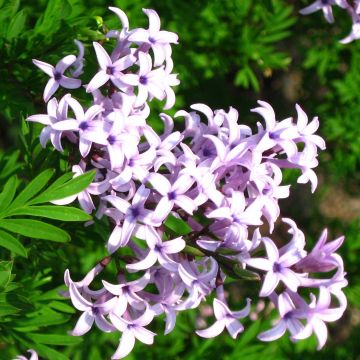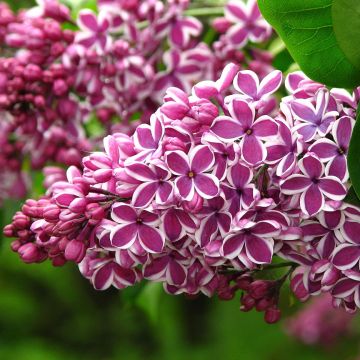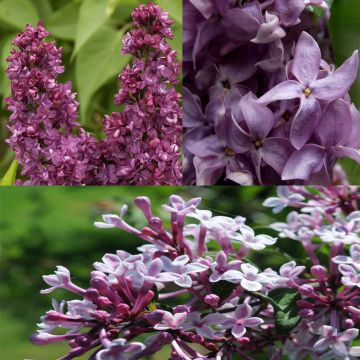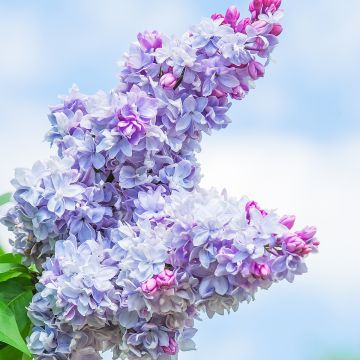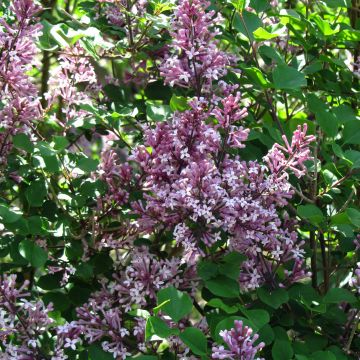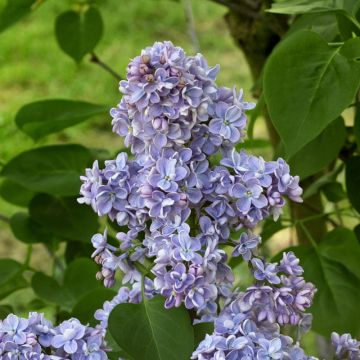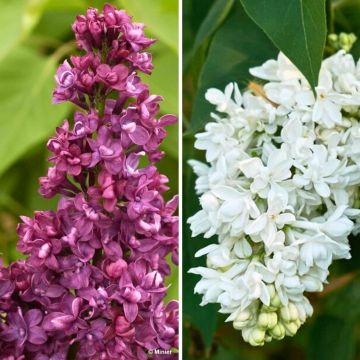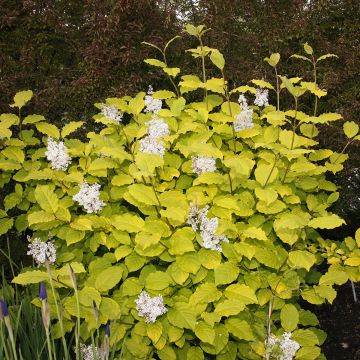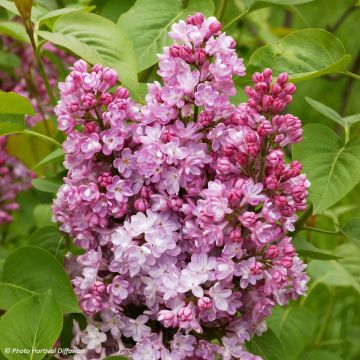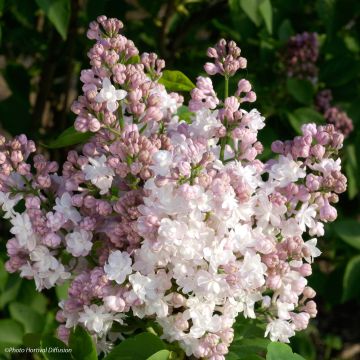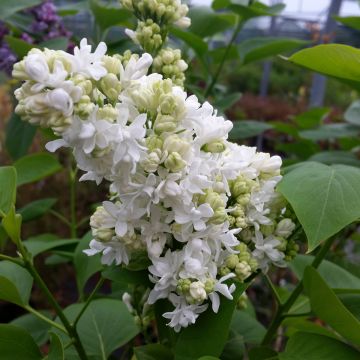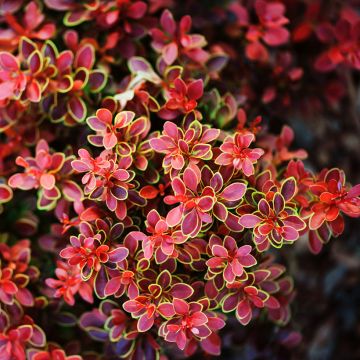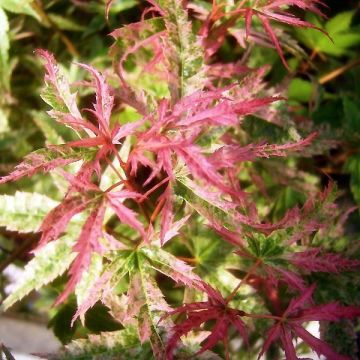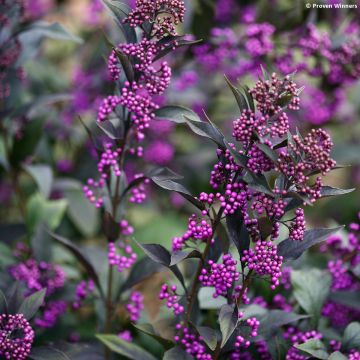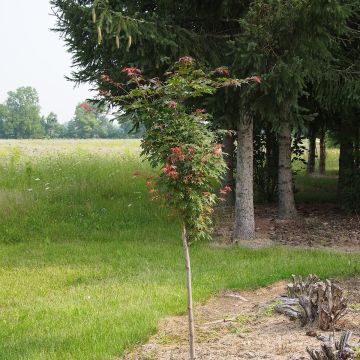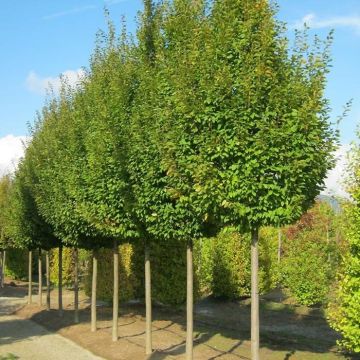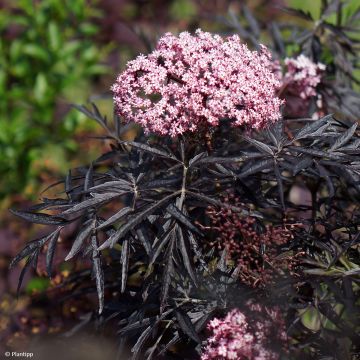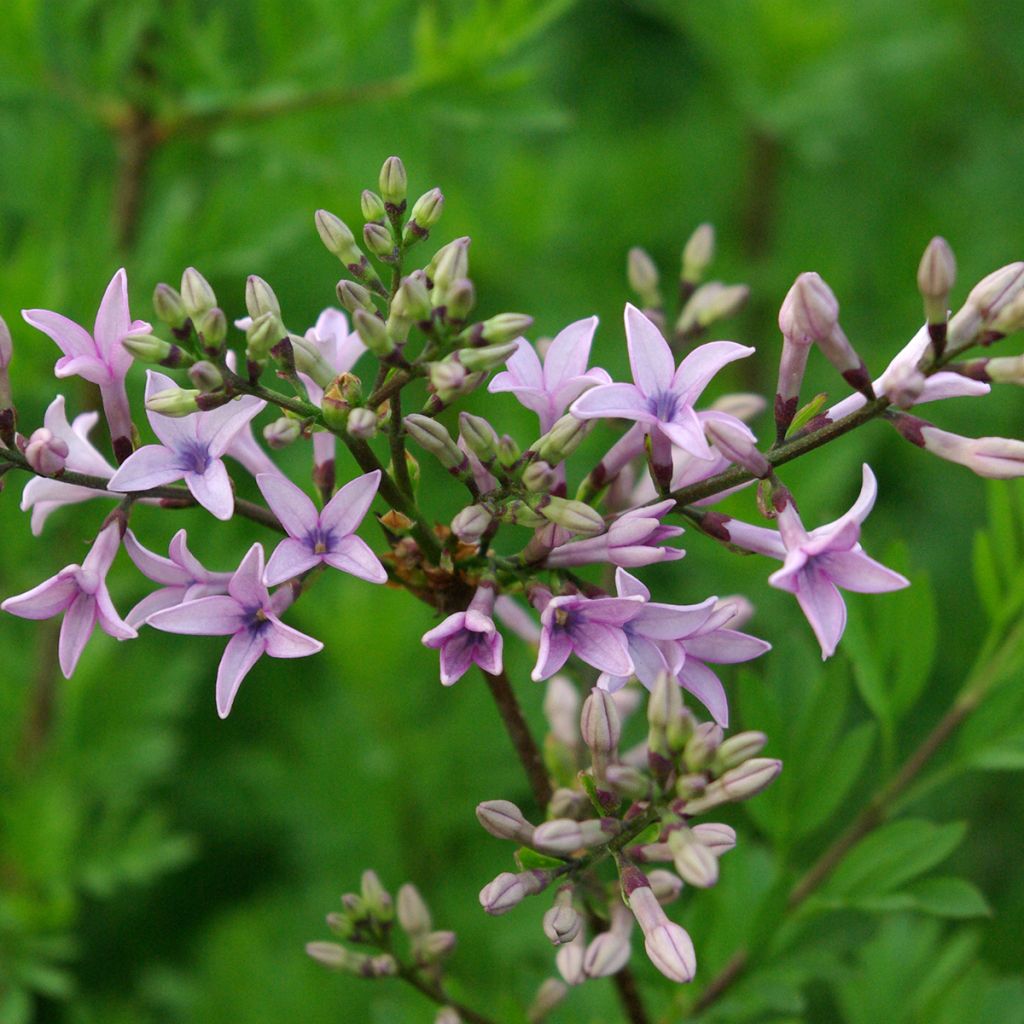

Syringa protolaciniata Kabul - Lilac
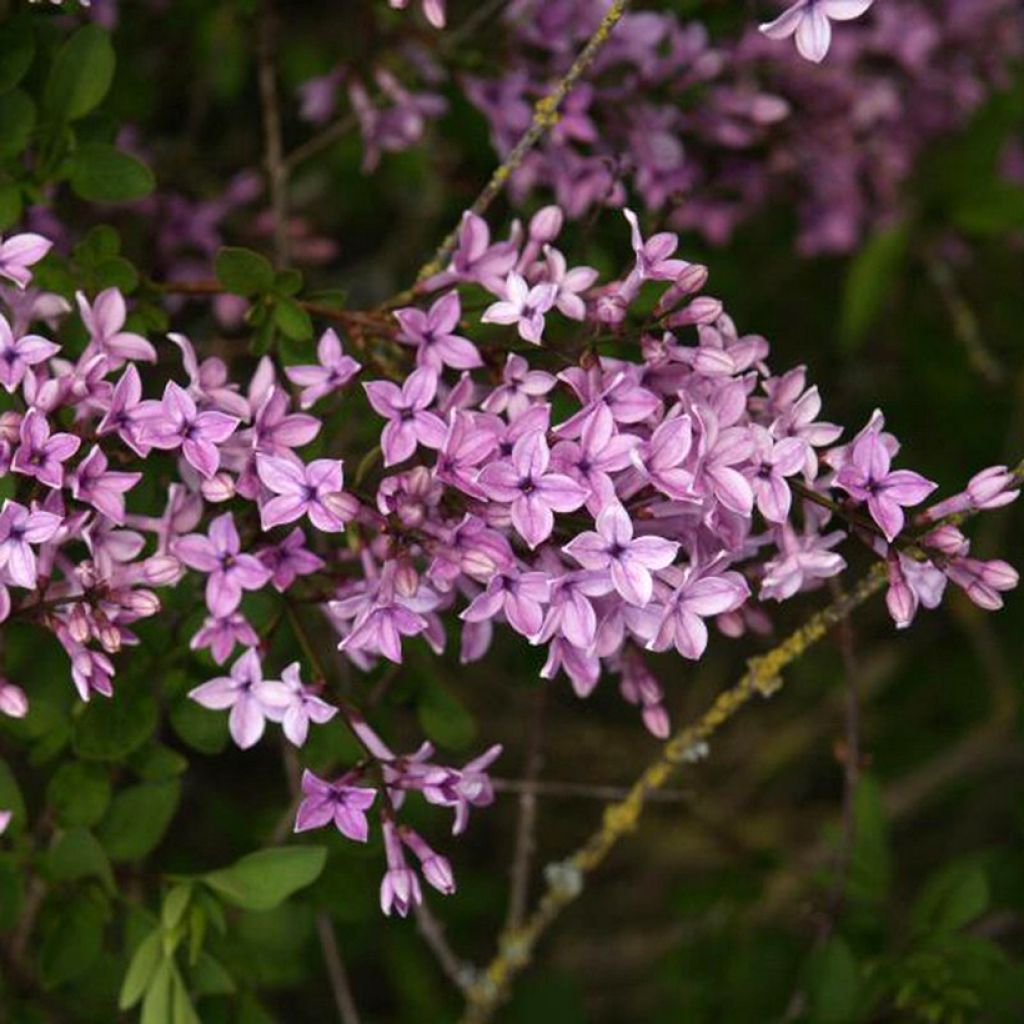

Syringa protolaciniata Kabul - Lilac
Syringa protolaciniata Kabul - Lilac
Syringa protolaciniata Kabul
Lilac
Special offer!
Receive a €20 voucher for any order over €90 (excluding delivery costs, credit notes, and plastic-free options)!
1- Add your favorite plants to your cart.
2- Once you have reached €90, confirm your order (you can even choose the delivery date!).
3- As soon as your order is shipped, you will receive an email containing your voucher code, valid for 3 months (90 days).
Your voucher is unique and can only be used once, for any order with a minimum value of €20, excluding delivery costs.
Can be combined with other current offers, non-divisible and non-refundable.
Why not try an alternative variety in stock?
View all →This plant carries a 24 months recovery warranty
More information
We guarantee the quality of our plants for a full growing cycle, and will replace at our expense any plant that fails to recover under normal climatic and planting conditions.
Would this plant suit my garden?
Set up your Plantfit profile →
Description
Syringa protolaciniata 'Kabul' is very close to Syringa afghanica, the Afghan Lilac. It is a selection of uncertain origin introduced in Eastern Europe, probably from China via Afghanistan, which is why it was named 'Kabul'. It is a modest-sized lilac with a wild appearance that blooms quite early in spring on very dark branches. The bush is characterised by deeply cut deciduous foliage and small clusters of well-scented purple flowers. It is a robust plant, accustomed to harsh conditions. A collector's lilac!
Syringa protolaciniata is given as a synonym for Syringa afghanica. It is a botanical species found in the Chinese provinces of Gansu and Qinghai. All Lilacs belong to the olive family.
Syringa protolaciniata 'Kabul' has a bushy, flexible, spreading habit, supported by slender and flexible branches. Its growth is rather slow, reaching about 1.50 m in all directions at the age of 10-12 years. Ultimately, it can reach up to 2 m in all directions. Its young branches are dark brown to purple-brown. This lilac has deciduous, medium green foliage, turning yellow in autumn. The 7 cm long leaves are pinnate, composed of 3 to 9 leaflets, with entire lanceolate upper parts. Flowering usually begins in late April, earlier or later depending on the climate. The inflorescences are pyramidal, light and airy thyrses, pleasantly fragrant, about 7-8 cm long. They are composed of small, slender, tubular flowers with 4 mauve petals, marked with dark violet in the throat. These inflorescences appear at the ends of the previous year's shoots. Their violet-like fragrance is more complex and refined than that of the common lilac Syringa vulgaris.
Fragrance, flowering, childhood memories or even a symbol of a significant event, everyone has a good reason to love lilacs. The Afghan Lilac 'Kabul' finds a place in gardens of all sizes, or even on a terrace or balcony, planted in a large pot. Hardy down to -25°C, easy to grow in well-drained soil, in cold or dry regions, not demanding, it adapts to many climates. It is a major element for creating a fragrant garden, its flowering preceding that of common lilacs which may overshadow its more delicate beauty. It can be planted in groups and of course in a small informal hedge mixed with other species (Mock Oranges, flowering currants, forsythias, Japanese quinces, botanical roses...). Its deliciously scented clusters are perfect for spring bouquets, along with early irises, peonies, tulips, bellflowers, and florist's ranunculus.
Report an error about the product description
Syringa protolaciniata Kabul - Lilac in pictures


Plant habit
Flowering
Foliage
Botanical data
Syringa
protolaciniata
Kabul
Oleaceae
Lilac
China
Other Syringa - Lilac
View all →Planting and care
Syringa protolaciniata 'Kabul' should be planted from November to March and from June to September. It is not very demanding in terms of soil, but it needs well-drained, not too compact soil, that is not waterlogged in winter. It tolerates limestone, but not in excess. This bush does not like peaty and very wet soils. It withstands summer drought once established as well as strong frosts in winter (down to -25°C). It is recommended to provide a general fertiliser every year at the beginning of the vegetation. It is preferable to plant it in full sun (but in light shade in hot climates), as its flowering is better when it receives maximum light and when winters are well contrasted. It is useful to remove faded inflorescences after flowering to prevent fruiting, which is of no interest and exhausts the plant. This will promote a more abundant flowering the following year. This variety blooms on the previous year's shoots. Pruning is not obligatory. Avoid severe pruning that limits flowering the following spring in all cases.
This lilac is quite sensitive to fungal diseases that stain its leaves. A well-ventilated location will limit the occurrence of these diseases. Like roses, excessively humid climates can be unfavourable. Avoid watering the foliage.
Planting period
Intended location
Care
This item has not been reviewed yet - be the first to leave a review about it.
Similar products
Haven't found what you were looking for?
Hardiness is the lowest winter temperature a plant can endure without suffering serious damage or even dying. However, hardiness is affected by location (a sheltered area, such as a patio), protection (winter cover) and soil type (hardiness is improved by well-drained soil).

Photo Sharing Terms & Conditions
In order to encourage gardeners to interact and share their experiences, Promesse de fleurs offers various media enabling content to be uploaded onto its Site - in particular via the ‘Photo sharing’ module.
The User agrees to refrain from:
- Posting any content that is illegal, prejudicial, insulting, racist, inciteful to hatred, revisionist, contrary to public decency, that infringes on privacy or on the privacy rights of third parties, in particular the publicity rights of persons and goods, intellectual property rights, or the right to privacy.
- Submitting content on behalf of a third party;
- Impersonate the identity of a third party and/or publish any personal information about a third party;
In general, the User undertakes to refrain from any unethical behaviour.
All Content (in particular text, comments, files, images, photos, videos, creative works, etc.), which may be subject to property or intellectual property rights, image or other private rights, shall remain the property of the User, subject to the limited rights granted by the terms of the licence granted by Promesse de fleurs as stated below. Users are at liberty to publish or not to publish such Content on the Site, notably via the ‘Photo Sharing’ facility, and accept that this Content shall be made public and freely accessible, notably on the Internet.
Users further acknowledge, undertake to have ,and guarantee that they hold all necessary rights and permissions to publish such material on the Site, in particular with regard to the legislation in force pertaining to any privacy, property, intellectual property, image, or contractual rights, or rights of any other nature. By publishing such Content on the Site, Users acknowledge accepting full liability as publishers of the Content within the meaning of the law, and grant Promesse de fleurs, free of charge, an inclusive, worldwide licence for the said Content for the entire duration of its publication, including all reproduction, representation, up/downloading, displaying, performing, transmission, and storage rights.
Users also grant permission for their name to be linked to the Content and accept that this link may not always be made available.
By engaging in posting material, Users consent to their Content becoming automatically accessible on the Internet, in particular on other sites and/or blogs and/or web pages of the Promesse de fleurs site, including in particular social pages and the Promesse de fleurs catalogue.
Users may secure the removal of entrusted content free of charge by issuing a simple request via our contact form.
The flowering period indicated on our website applies to countries and regions located in USDA zone 8 (France, the United Kingdom, Ireland, the Netherlands, etc.)
It will vary according to where you live:
- In zones 9 to 10 (Italy, Spain, Greece, etc.), flowering will occur about 2 to 4 weeks earlier.
- In zones 6 to 7 (Germany, Poland, Slovenia, and lower mountainous regions), flowering will be delayed by 2 to 3 weeks.
- In zone 5 (Central Europe, Scandinavia), blooming will be delayed by 3 to 5 weeks.
In temperate climates, pruning of spring-flowering shrubs (forsythia, spireas, etc.) should be done just after flowering.
Pruning of summer-flowering shrubs (Indian Lilac, Perovskia, etc.) can be done in winter or spring.
In cold regions as well as with frost-sensitive plants, avoid pruning too early when severe frosts may still occur.
The planting period indicated on our website applies to countries and regions located in USDA zone 8 (France, United Kingdom, Ireland, Netherlands).
It will vary according to where you live:
- In Mediterranean zones (Marseille, Madrid, Milan, etc.), autumn and winter are the best planting periods.
- In continental zones (Strasbourg, Munich, Vienna, etc.), delay planting by 2 to 3 weeks in spring and bring it forward by 2 to 4 weeks in autumn.
- In mountainous regions (the Alps, Pyrenees, Carpathians, etc.), it is best to plant in late spring (May-June) or late summer (August-September).
The harvesting period indicated on our website applies to countries and regions in USDA zone 8 (France, England, Ireland, the Netherlands).
In colder areas (Scandinavia, Poland, Austria...) fruit and vegetable harvests are likely to be delayed by 3-4 weeks.
In warmer areas (Italy, Spain, Greece, etc.), harvesting will probably take place earlier, depending on weather conditions.
The sowing periods indicated on our website apply to countries and regions within USDA Zone 8 (France, UK, Ireland, Netherlands).
In colder areas (Scandinavia, Poland, Austria...), delay any outdoor sowing by 3-4 weeks, or sow under glass.
In warmer climes (Italy, Spain, Greece, etc.), bring outdoor sowing forward by a few weeks.






























